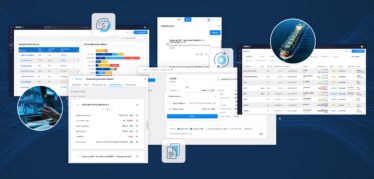Just-in-time sailing is an exciting concept that has been identified by IMO as a feasible opportunity to reduce GHG emissions from ships and support the goals of the Initial IMO GHG Strategy.
So, what exactly is “just-in-time” sailing? IMO defines it as follows: “Just In Time (JIT) allows for ships to optimize their speed during the voyage in order to arrive at the Pilot Boarding Place when the availability of berth, fairway, and nautical services is ensured. Just In Time also allows the ship to adjust and optimize its speed during the voyage.”
Implementing “just-in-time” ship operations means ships receive information in advance so they can better time their arrival at the berth to avoid spending hours or days waiting at anchor outside ports. This can also allow ships to slow down, providing a reduction in the carbon footprint of shipping as well as saving fuel costs.
To better understand just-in-time sailing and the many benefits it can offer the maritime shipping industry, let’s explore its application in the broader context of digitalization and optimization.
Requirements for Just In Time Sailing
To make just-in-time decisions, you need your data in an actionable format. However, the 120 million points of data generated by the maritime industry every day is often just sitting in excel, email, and other non-actionable formats. Embracing a digital solution for your commercial maritime workflow is a proven way to drive efficiency in operations and gain the visibility into chartering/voyage management that you need to achieve Just In Time efficiency.
In addition to data siloes, the current inefficiencies of port operations are largely due to an overall lack of information sharing. Terminal and other service providers share few updates regarding frequent schedule changes and final departure times, and incoming ships do not receive updates about port and berth availability until about 2 hours prior to arrival when the ship is within radio range. If stakeholders share updates earlier and more frequently, incoming ships can adjust their sailing speed in advance and sail much more efficiently. Even just a 10% speed reduction can result in a 30% reduction in CO2 emissions, allowing the industry to work smarter – saving time and money while protecting the environment.
The Impact of Digitalization
Digitalization is sweeping the industry, with 69% of shipping businesses currently in the process of exploring digital solutions and 2 in 3 companies who have already started their digitalization journeys. Digitalization is a crucial ingredient for enabling Just In Time arrivals, as it provides the means for real-time data analysis and sharing that is accurate, contextual, automated, and seamless. With a digital solution in place to capture the influx of data hitting your systems daily and translate it into actions, you can then easily share those insights with key stakeholders. Achieving a more efficient and sustainable industry requires collaboration, which is streamlined through digitalization.
Achieving Just In Time Through Optimization
Once you have a means to capture and make sense of the data, the next step is finding new and innovative ways to use that data. This is where optimization comes in.
Take the scheduling function, for example. Schedulers have an arduous job that requires constant monitoring of open positions within their internal fleet, the open market, and the cargo book for both internal and external commitments. Often the best fit today is not the best fit tomorrow – or even in a few hours – and a flawed schedule can have cascading negative impacts on the business.
As the world and the maritime industry becomes more complex, there is simply too much information for schedulers to achieve optimal results through manually managing this process. By leveraging a cloud platform with a schedule optimization algorithm, schedulers can easily analyze every potential match in seconds to confidently book the best scheduling scenarios for your business both now and into the future. With this insight, schedulers can over time determine the best sailing speeds that ensure ships arrive in port by laycan – minimizing waiting time, saving on bunker consumption, and reducing CO2 emissions.
A Digital Platform to Enable Just In Time
Navigating the ever-increasing complexity of your commercial maritime workflow as the industry evolves and digitalizes can be overwhelming. It is important to take a step back to ensure that the digital tools you decide to incorporate are strategic, cater to your unique objectives and requirements, and future-proof your business as new efficiencies like Just In Time sailing become a reality. The Veson IMOS Platform (VIP)’s advanced Schedule Optimizer arms schedulers with a premiere optimization algorithm integrated with the rest of your organization’s broader workflows and systems to enable seamless scheduling analysis and optimal decision making.
To learn more about achieving Just In Time sailing through digitalization and optimization, we invite you to watch the on-demand webinar, “Just In Time Concept Through Optimisation,” below.



 Jesse Dilanni
Jesse Dilanni
 Russ Hubbard
Russ Hubbard
 Josh Luby
Josh Luby